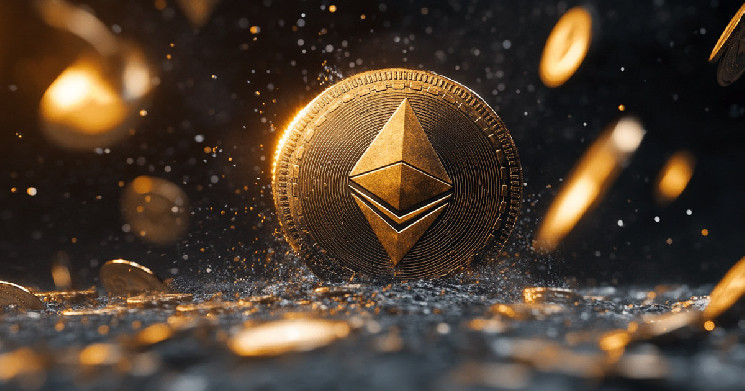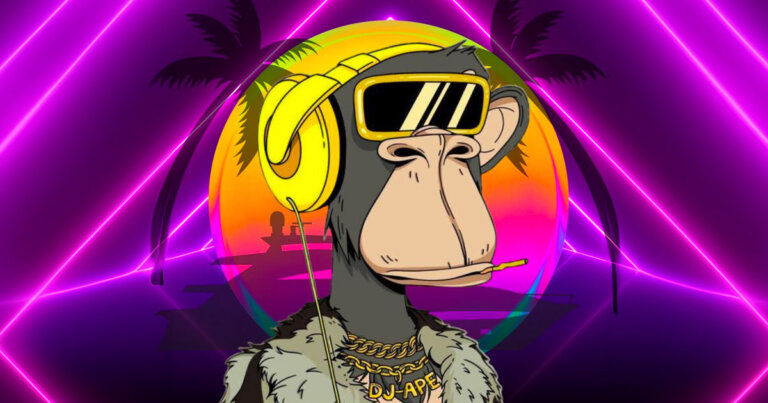What is Ethereum? A Beginner’s Guide
- 28 Aug 2024
- Crypto OG's mentioned:

Ethereum is one of the most influential and widely used blockchain platforms in the world. While Bitcoin often takes the spotlight as the first and most well-known cryptocurrency, Ethereum has carved out its niche by offering a platform that goes far beyond just digital currency. This guide will introduce you to Ethereum, explain how it works, and explore why it’s such a significant player in the cryptocurrency space.
What is Ethereum?
Launched in 2015 by a team of developers led by Vitalik Buterin, Ethereum is a decentralized blockchain platform that enables developers to build and deploy decentralized applications (dApps). Unlike Bitcoin, which is primarily designed as a digital currency, Ethereum was created to facilitate smart contracts and applications that run on a decentralized network.
Ethereum is often referred to as a “world computer” because of its potential to decentralize the internet by replacing traditional servers with thousands of nodes run by volunteers worldwide. This vision of decentralizing not just currency but also applications and services makes Ethereum unique and positions it as a cornerstone of Web3, the next generation of the internet.
Ethereum’s Role in Web3
Ethereum is more than just a blockchain; it’s the backbone of Web3, a decentralized vision of the internet where users control their data, identity, and interactions. Web3 is a response to the limitations of Web2, where centralized platforms dominate and often exploit user data for profit.

Ethereum’s Contributions to Web3
- Ownership of Digital Assets: Unlike centralized platforms, Ethereum allows users to own and control their digital assets, such as NFTs, directly on the blockchain.
- Decentralized Finance (DeFi): Ethereum’s infrastructure supports DeFi protocols that eliminate intermediaries like banks, offering financial services to anyone with an internet connection.
- Self-Sovereign Identity: Ethereum-based identity solutions, such as ENS (Ethereum Name Service), give users full control over their digital identities.
Ethereum vs. Bitcoin: Key Differences
While both Ethereum and Bitcoin are built on blockchain technology, they serve different purposes and have distinct features:
- Purpose: Bitcoin is primarily a digital currency designed to function as an alternative to traditional money. Ethereum, on the other hand, is a platform for building decentralized applications, with its cryptocurrency, Ether (ETH), used to power these applications.
- Blockchain Functionality: Bitcoin’s blockchain is primarily used to record transactions, while Ethereum’s blockchain can execute code and run applications through smart contracts.
- Supply: Bitcoin has a capped supply of 21 million coins, whereas Ether does not have a fixed supply, though changes in Ethereum’s protocol have introduced mechanisms to limit inflation.
How Ethereum Works
Ethereum operates as a decentralized network of nodes, each maintaining a copy of the blockchain. The platform allows developers to write and deploy smart contracts—self-executing pieces of code stored on the blockchain.
Ethereum Virtual Machine (EVM)
At the heart of Ethereum’s functionality is the Ethereum Virtual Machine (EVM). The EVM acts as a decentralized computer that processes and executes smart contracts. It ensures that all nodes in the Ethereum network reach consensus on the outcome of transactions, making it a reliable and tamper-proof system.

EVM Use Cases
- Smart Contract Execution: Running DeFi protocols like Compound or MakerDAO.
- Token Standards: Enabling the creation of ERC-20 tokens (fungible) and ERC-721 tokens (non-fungible).
- Cross-Chain Interactions: Facilitating interoperability with other blockchains via bridges like Polygon and Avalanche.
What Makes Smart Contracts Unique?
Smart contracts are the defining feature of Ethereum. These self-executing agreements eliminate intermediaries, reducing costs and increasing trust between parties.
Applications of Smart Contracts
- Insurance Automation: Automatically paying out claims when predefined conditions are met, such as flight delays. For instance, a flight insurance smart contract can access live flight data and issue compensation to passengers automatically in case of delays or cancellations.
- Real Estate Transactions: Streamlining the property buying process by transferring ownership once payments clear. Smart contracts can also be used to manage rental agreements, ensuring that funds are transferred to landlords automatically on specified dates.
- Gaming Economies: Rewarding players with in-game assets or tokens, as seen in Axie Infinity. Blockchain-based games like Gods Unchained also utilize smart contracts to mint and trade unique game cards as NFTs.
- Supply Chain Management: Automating payments between suppliers and manufacturers once goods are delivered and verified. For example, a smart contract can release funds as soon as a shipment is scanned at its destination.
- Healthcare Payments: Automating claims processing for patients and insurers. Smart contracts can verify patient eligibility and process payments without manual intervention, reducing delays and fraud.
- Freelance Work Agreements: Platforms like LaborX use smart contracts to ensure freelancers receive payments automatically upon project completion and client approval.
- Crowdfunding: Managing contributions and ensuring refunds if fundraising goals are not met. For example, platforms like Gitcoin use smart contracts to fund open-source projects transparently.
- Royalty Distribution: Ensuring fair and automatic royalty payments for artists, musicians, and content creators whenever their work is purchased or streamed. Platforms like Audius use smart contracts to reward creators in real-time.
- Charitable Donations: Smart contracts can ensure that donations reach their intended recipients, and funds are used only for specified purposes, providing greater transparency to donors.
- Voting Systems: Powering secure and transparent voting platforms where votes are recorded immutably, ensuring election integrity without the need for centralized oversight.
By leveraging smart contracts, industries can achieve greater efficiency, transparency, and trust, ultimately reducing costs and the potential for disputes.
The Power of Decentralized Applications (dApps)
Decentralized applications (dApps) leverage Ethereum’s infrastructure to offer services without relying on centralized servers. These applications are transparent, secure, and resistant to censorship.
Categories of dApps
- Finance: Protocols like Uniswap and Yearn.Finance enable decentralized trading and yield farming.
- Marketplaces: Platforms such as OpenSea and Rarible allow trading of NFTs, from digital art to virtual real estate.
- Social Media: Decentralized platforms like Mastodon prioritize user privacy and free expression.
- Healthcare: dApps are being developed to store medical records securely while granting patients full control over their data.
- Gaming: Blockchain-based games like Axie Infinity and The Sandbox allow players to own, trade, and monetize in-game assets, creating new economic opportunities.
- Education: Platforms like BitDegree provide blockchain-powered courses and issue immutable certificates to learners, ensuring authenticity and verifiability of their credentials.
- Supply Chain Management: dApps like VeChain offer transparent tracking of goods across the supply chain, reducing fraud and ensuring product authenticity.
The Role of Ether (ETH)
Ether is not only the native currency of Ethereum but also the fuel that powers its network. ETH is required to pay for gas, a unit of computational effort needed to execute transactions or run smart contracts.
Key Functions of ETH
- Gas Fees: Higher transaction complexity or network congestion results in higher gas fees.
- Staking Rewards: Validators earn ETH rewards by securing the network in Ethereum’s proof-of-stake system.
- Store of Value: Like Bitcoin, ETH is increasingly viewed as a digital asset for investment.
The Transition to Ethereum 2.0
Ethereum 2.0 (Eth2) is a multi-phase upgrade designed to address Ethereum’s scalability and sustainability issues. The shift from proof of work (PoW) to proof of stake (PoS) is the cornerstone of this transformation.
Key Features of Ethereum 2.0
- Proof of Stake (PoS): Reduces energy consumption by over 99%, making Ethereum more environmentally friendly.
- Sharding: Introduces shard chains to increase transaction throughput.
- Layer 2 Solutions: Integrates scaling solutions like Optimism and Arbitrum for faster, cheaper transactions.

Impact of the Merge
The Merge, completed in September 2022, marked Ethereum’s transition to PoS. This milestone reduced the network’s carbon footprint and set the stage for future scalability improvements.
Real-World Use Cases of Ethereum
Ethereum’s versatility has made it the foundation for countless innovations across industries.
1. Decentralized Finance (DeFi)
DeFi platforms provide alternatives to traditional banking, enabling users to lend, borrow, and earn interest without intermediaries. To explore this concept in-depth, check out our post, What is DeFi?.
Examples
- MakerDAO: A stablecoin platform that allows users to generate DAI, a cryptocurrency pegged to the US dollar.
- Curve Finance: A DeFi protocol optimized for stablecoin trading with low fees.
- Aave: A decentralized lending platform where users can borrow assets or earn interest by lending their tokens.
- Uniswap: A decentralized exchange (DEX) that facilitates automated trading of Ethereum-based tokens using liquidity pools.
- SushiSwap: A community-driven DEX that offers yield farming opportunities along with token swapping.
- Compound: A protocol for earning interest on crypto by lending it to borrowers in a decentralized manner.
- Balancer: A DeFi protocol that allows users to create or invest in customizable liquidity pools, optimizing fees and rewards.
- Synthetix: A platform enabling the trading of synthetic assets that mimic the value of real-world assets like stocks and commodities.
2. Non-Fungible Tokens (NFTs)
NFTs have transformed industries like art, gaming, and fashion by offering verifiable ownership of digital assets. To explore whether NFTs are here to stay and their potential future, check out our post, Are NFTs Dead? The Future of Non-Fungible Tokens.
Examples
- NBA Top Shot: A marketplace for trading official NBA collectibles as NFTs.
- CryptoPunks: Iconic NFT art that has become a cultural phenomenon.
- Bored Ape Yacht Club (BAYC): A collection of 10,000 unique ape-themed NFTs that double as membership to an exclusive social club.
- Decentraland: A virtual world where users can buy, sell, and develop digital land as NFTs.
- Art Blocks: A platform for generative and programmable NFT art, allowing artists to create unique works algorithmically.
- Foundation: A marketplace that enables artists to mint and auction NFT art, fostering creativity and direct artist-patron relationships.
- Zed Run: A blockchain-based game where players can own, breed, and race virtual horses as NFTs.
- Axie Infinity: A blockchain-based game where players collect, breed, and trade NFT creatures called Axies for gameplay and profit.

3. Supply Chain Management
Ethereum enables businesses to track products from origin to delivery, improving transparency and efficiency. By using blockchain, companies can ensure that data remains tamper-proof and accessible to all stakeholders in the supply chain.
Examples
- Provenance: Tracks ethical sourcing of materials in industries like fashion, ensuring transparency in the production process.
- IBM Food Trust: Uses blockchain to enhance food safety and traceability by providing a transparent supply chain for fresh produce, meats, and more.
- VeChain: A blockchain solution used for tracking products like pharmaceuticals, ensuring quality and compliance with regulatory standards.
- CargoX: Offers blockchain-powered document transfer for global trade, streamlining bill of lading processes and reducing paperwork.
- OriginTrail: Provides decentralized knowledge graphs to trace products like food and pharmaceuticals through every stage of the supply chain.
- TradeLens: A blockchain platform co-developed by IBM and Maersk to digitize and optimize global shipping logistics, improving transparency and efficiency.
Challenges Ethereum Faces
Despite its strengths, Ethereum must address several challenges to maintain its dominance:
1. Scalability
High gas fees and slow transaction speeds remain significant obstacles, especially during periods of network congestion. As more decentralized applications (dApps) and users join the network, these issues become even more pronounced. For example, during the NFT boom in 2021, transaction fees skyrocketed, making it cost-prohibitive for smaller users to interact with the network.
To tackle these challenges, Ethereum relies on Layer 2 solutions like Polygon, Arbitrum, and zkSync, which offload transactions from the main Ethereum chain to reduce costs and increase speeds. Additionally, the introduction of shard chains as part of Ethereum 2.0 promises to significantly improve scalability by splitting the blockchain into multiple parallel chains. However, the timeline for fully implementing these solutions remains a concern, as delays could allow competitors to gain more traction.
2. Competition
Ethereum faces intense competition from newer blockchains like Solana, Cardano, and Binance Smart Chain. These platforms often tout faster transaction speeds, lower fees, and innovative consensus mechanisms like proof of history (PoH) used by Solana or proof of stake (PoS) adopted by Cardano.
For instance, Solana can process up to 65,000 transactions per second (TPS) compared to Ethereum’s current capacity of around 30 TPS, making it a more attractive option for high-frequency applications like gaming and DeFi. Similarly, Binance Smart Chain has gained popularity due to its compatibility with Ethereum’s ecosystem while offering significantly lower gas fees.
Ethereum’s advantage lies in its extensive developer community, established infrastructure, and ecosystem of dApps. However, to maintain its leadership, Ethereum must accelerate its roadmap, improve its user experience, and remain adaptable to emerging innovations in the blockchain space.
3. Regulatory Risks
As blockchain and cryptocurrency adoption grow, governments worldwide are ramping up efforts to regulate the space. Ethereum’s decentralized nature and use cases in areas like DeFi and NFTs often attract regulatory attention, particularly regarding anti-money laundering (AML) compliance, tax reporting, and consumer protection.
For example, DeFi platforms built on Ethereum have faced increased attention for operating without centralized oversight, which can conflict with existing financial regulations. Similarly, the rapid rise of NFTs has sparked debates over intellectual property rights, fraud, and environmental concerns. The environmental impact of blockchain networks has been a particularly hot topic, leading to questions about how Ethereum’s transition to proof of stake might help address these issues. Explore more about the relationship between crypto and sustainability in our post, Can Crypto Go Green?.
To navigate these challenges, Ethereum projects and developers must work towards better transparency and compliance frameworks while maintaining decentralization. Ethereum’s smart contracts, which are the foundation of many decentralized applications, are also being adapted for use in industries beyond blockchain. From supply chains to insurance, these innovations highlight the potential for Ethereum to revolutionize traditional systems. Learn more about their real-world applications in our article on smart contracts transforming industries.
Conclusion: Ethereum’s Role in the Future of Blockchain
Ethereum is much more than just a cryptocurrency; it’s a transformative platform that has revolutionized how we think about finance, identity, and digital ownership. With its robust ecosystem, innovative upgrades, and growing adoption, Ethereum continues to be a driving force in the blockchain space.
As Ethereum 2.0 progresses, its ability to scale, reduce costs, and integrate new technologies will solidify its position as the backbone of Web3. Whether you’re an investor, developer, or enthusiast, Ethereum represents the forefront of blockchain innovation and its limitless potential.








